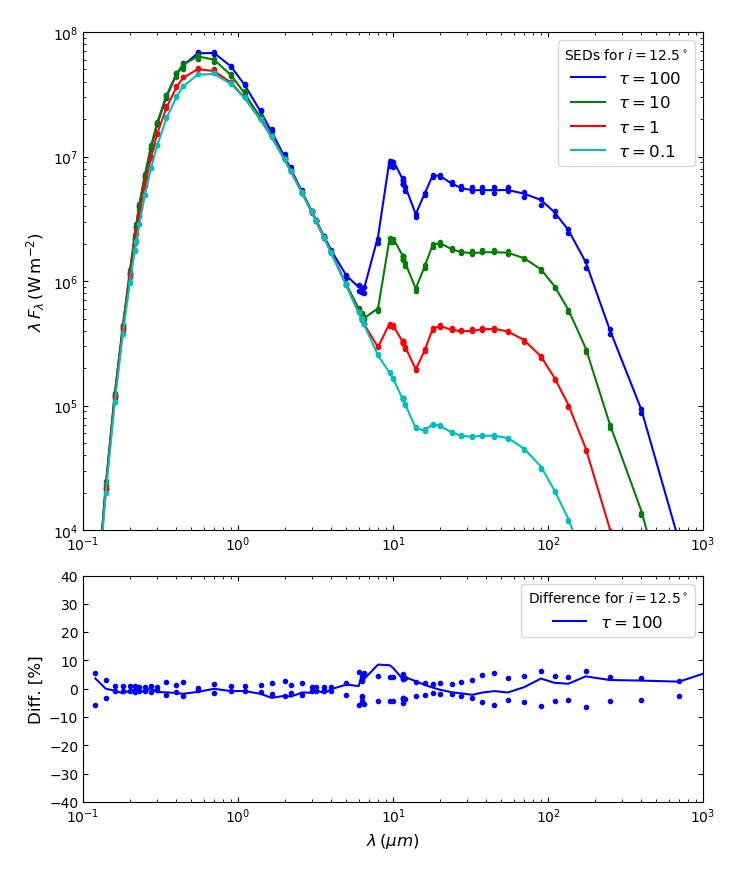Pascucci et al. 2004 present a 2D continuum radiative transfer benchmark problem assuming conditions of local thermal equilibrium (LTE) with the radiation field. The test configuration is a star embedded in a circumstellar disk with an inner cavity free of dust. The authors provide results produced by five different radiative transfer codes for several optical depths and viewing angles.
| Publication | Pascucci et al. 2004 [ADS] |
|---|---|
| Web site | http://www.mpia.de/PSF/PSFpages/RT/benchmark.html |
| Ski file | pascucci_template.ski |
| Wavelength grid | pascucci_wavelengths.dat |
The figures below show the SEDs produced by SKIRT for an inclination of \(12.5^\circ\) (left) and \(77.5^\circ\) (right) and for edge-on optical depths ranging from 0.1 to 100 (colored curves and dots). The solid lines show the SKIRT solutions, the dots indicate the range of the solutions produced by the five codes participating in the original benchmark. The lower panel of each figure displays the difference between the SKIRT solution and the average benchmark solution for the highest optical depth.
 |  |
The figure below shows the vertical temperature for the four models (with different optical depth) for a distance of 2 AU from the central star in the midplane, comparable to Figure 6 in Pascucci et al. 2004.
 |
To perform this benchmark, download the ski file and wavelength grid data file provided above (References and downloads). Open the ski file in a text editor to adjust the following parameter values to a particular benchmark configuration:
| Parameter | XML element | XML attribute |
|---|---|---|
| Optical depth | OpticalDepthMaterialNormalization | opticalDepth |
| Nr of photon packets | MonteCarloSimulation | numPackets |
The benchmark specifies radial optical depth values (integrated from the origin to infinity) while the values in the ski file normalize the optical depth along the complete X-axis (integrated from negative to positive infinity). The value in the ski file therefore must be set to twice the value specified for the corresponding benchmark. There are four optical depth values; here are the corresponding values for the number of photon packets in the SKIRT configuration:
| Radial optical depth | Nr of photon packets |
|---|---|
| 0.1 | 5e6 |
| 1 | 5e6 |
| 10 | 1e7 |
| 100 | 5e7 |
Then pass the (name of) the ski file to SKIRT as a single command line argument. Higher optical depths lead to longer simulation run times. At the end of the simulation run, SKIRT outputs temperature profiles and SEDs which can be compared to the original benchmark results.